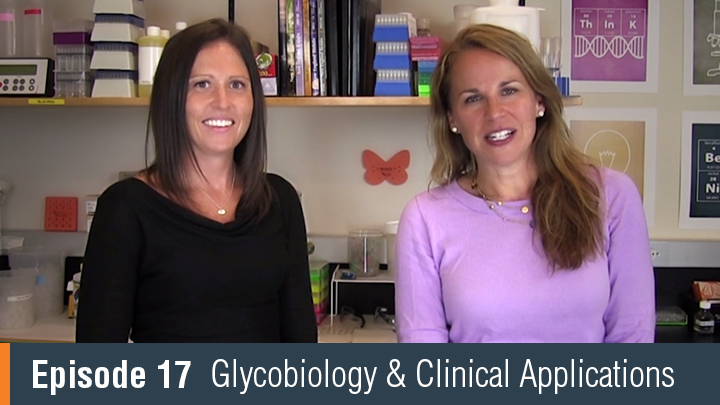Peptides from Phage Display Library Modulate Gene Expression in Mesenchymal Cells and Potentiate Osteogenesis in Unicortical Bone Defects
Script
James Witowsky:
The overall goal of this experiment is to identify sequences that potentiate mesenchymal cell differentiation and promote bone repair. The initial step is to isolate by biopanning the phage that binds to bone, proceed to identify the peptide sequences that bind to mesenchymal cells, and also determine the subsequent changes in gene expression. Perform experiments to determine how the peptide sequences can be delivered to bone for regenerative purposes. As a final step, examine bone repair histologically. Taken together, the results can offer important insights into mechanisms of cell differentiation in vitro and bone repair in vivo.
Gary Balian:
The advantages of using the biopanning technique with a phage display library are that we were able to identify peptides that target bone and can be used to stimulate the differentiation of mesenchymal cells and potentiate bone repair. Ultimately, these peptide sequences may be useful in therapeutic modalities for bone repair and for the treatment of bone loss, such as osteopenia and osteoporosis.
Gina Beck:
Based on a study where Rezultati and Pascalini showed that biopanning can be used to isolate peptide sequences that target blood vessels, we opted to adapt this method to query mechanisms in bone.
James Witowsky:
For the in vivo biopanning procedure, perfused 10 times 10 to the 10th platforming units of the NEB Ph.D. 12 phage display peptide library through the heart of a 10 week old BALB/c mouse. After approximately five minutes, euthanized the mouse. Expose and dissect the femurs. Cut off the ends and remove the bone marrow. Rinse. The left femur, both inside and outside, with PBS 10 times. Then, add the bone to ER2537 bacteria.
James Witowsky:
In order to remove non bound phage, use 2% dried skim milk in a syringe with a 21 gauge needle to rinse the intramedullary canal of the right femur 10 times. Now, elute the bound phage from the intramedullary canal with hydrochloric acid glycine buffer, pH 2.2, neutralized with one molatrice. To amplify the phage, add elute to ER2537 bacteria and culture for 4.5 hours. Carefully transfer the supernatants into fresh tubes and precipitate the phage three times by the addition of polyethylene glycol sodium chloride solution. Incubate the tubes overnight at four degrees Celsius.
James Witowsky:
Finally, re-suspend the pellet in TBS with 0.02% sodium azide. Plaque the phage onto plates to determine the plaque forming units of the amplified eluates. Repeat the in vivo biopanning procedure for both the eluded and non eluded phage four times. Amplify pooled phage and bacterial cultures. Purify and quantify the DNA.
James Witowsky:
Sequence the final phage DNA using 98 primer provided with the phage display kit. Importantly, calculate the frequency of phage DNA sequence representation. Now, synthesize peptides, incorporating a glycine, glycine, glycine, serine, lysine sequence. Seed and amplified D1 cells, a cloned mouse multi potential bone marrow stromal cell line that was developed in our lab. At 90% confluence, trypsinize the cells and centrifuge to pellet and count.
James Witowsky:
For peptide staining, plate cells on gelatin coated chamber well slides and culture for 24 hours. Wash the cells With PBS and fix with 4% paraformaldehyde for 30 minutes. Now, perform blocking incubations with glycine, followed by BSA avidin and BSA biotin blocking solutions. Add 100 micromolar of biotinylated L7 and R1 peptides. Proceed to wash the cells three times with PBS for five minutes, each.
James Witowsky:
Add a one to 1,000 dilution of alexa fluor streptavidin, cover in foil, and incubate in a dark drawer for 30 minutes. Wash the cells and mount cover slips with Vectashield Mounting Media. Now, analyze the slides under a fluorescent microscope. 24 hours before surgery, soak the gel foam cylinders. Transfer the gel foam cylinders with 20 micro molar peptide, either L7, or R1, or PBS buffer without peptide, to sterile 12 well culture dishes, and refrigerate overnight at four degrees Celsius.
James Witowsky:
At the time of surgery, place the gel foam composite on ice until use. Using a pneumatic burr under saline irrigation, create a large oblong unicortical defect of three millimeters width, by eight millimeters length. Treat the bone defect with prepared gel foams by inserting all implanted scaffolds using gentle tapping. Euthanize the rats and collect Tibias at defined time points. Carefully check for the bone defect and fix the harvested tibia in 10% neutral buffered formalin for paraffin sectioning. Finally, stain all the tissue sections with hematoxylin eosin to label the osteoid matrix.
James Witowsky:
Fluorescein isothiocyanate, labeled avidin, permits microscopic detection of the binding of peptides on cells grown in vitro. Here, the peptides bind to mesenchymal cells in culture. To determine the osteogenic effect of peptides on cells in vitro, mesenchymal cells in culture can be treated with test peptides to determine changes in cell morphology. For instance, at day four, the cells start to aggregate.
James Witowsky:
The aggregates enlarged with time to form nodules. Interestingly, bones section stained with H&E auto fluoresce under UV light. This greater contrast between bone and non-bone tissues facilitates analyses. Quantify the presence of bone in the sections to determine bone repair in the defects treated with gel foam plus peptide by comparison to gel foam alone. Here, defects that were filled with gel foam plus peptide showed the largest amount of cortical repair with time.
Gina Beck:
While attempting this procedure, it's important to be extremely methodical in your data entry, because of the large number of specimens that will invariably accumulate over the time until you have selected the final group of peptides.
Gary Balian:
The development of in vivo biopanning as a technique to identify peptides that target bone means that we now have potential drugs that could be used as a therapy for bone repair and for bone loss. One of the mechanisms that underlies bone repair is also involved in bone loss. Understanding these mechanisms in more detail and having tools that could be used for the treatment of disorders such as delayed fractures and osteoporosis will help improve the therapies that can be devised for healthcare.
Related Videos
-

Overview of Glycobiology -

Behind the Paper: An engineered Fbs1 carbohydrate binding protein for selective capture of N-glycans and N-glycopeptides -

NEB® TV Ep. 17 – Glycobiology and Clinical Applications

